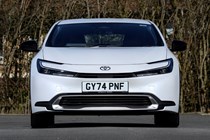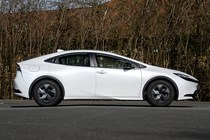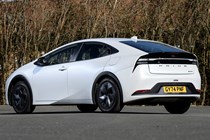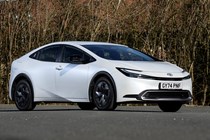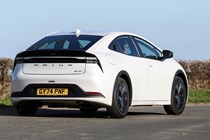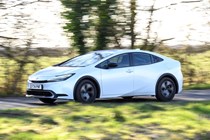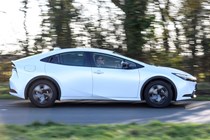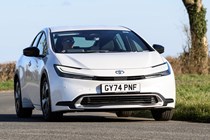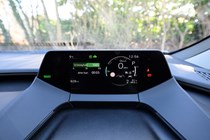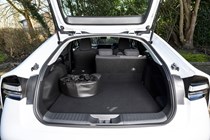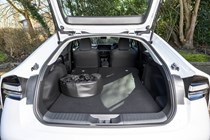Toyota Prius Plug In review: No longer just for Uber drivers
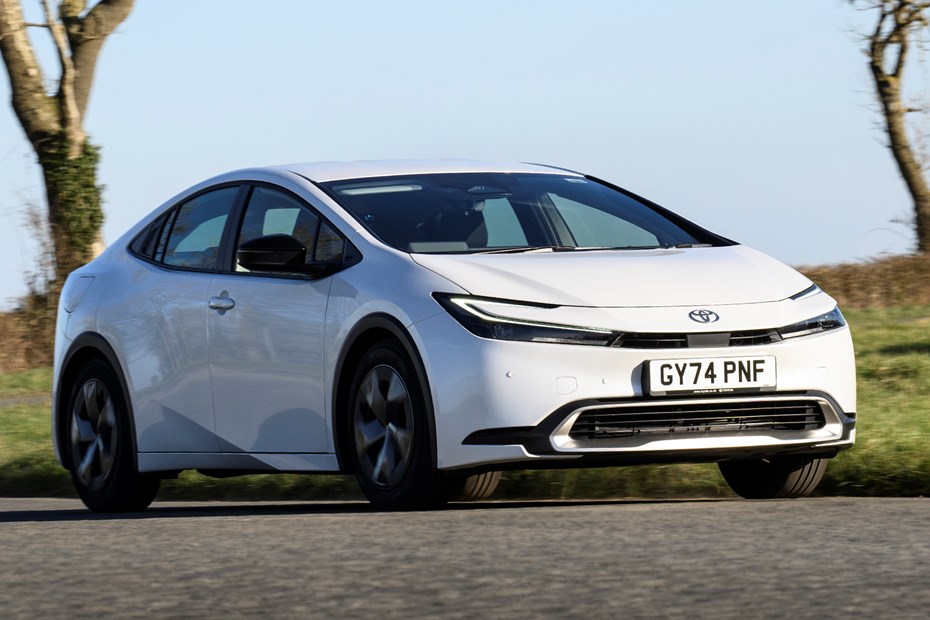
At a glance
| Price new | £37,895 - £40,545 |
|---|---|
| Used prices | £26,886 - £34,430 |
| Road tax cost | £195 - £620 |
| Insurance group | 31 |
Get an insurance quote with

|
|
| Fuel economy | Not tested to latest standards |
| Number of doors | 5 |
| View full specs for a specific version | |
Available fuel types
Hybrid
Pros & cons
- Effortlessly smooth performance
- Excellent efficiency
- Stands out from the crowd
- Interior lacks design flair
- Small model range
- Only plug-in hybrid offered
Toyota Prius Plug-in rivals
Overview
Should you buy a Toyota Prius Plug-in?
Yes, we like it. If you’re after something a little different in your next family car, the Toyota Prius Plug is one of the best plug-in hybrids. Once the poster child of frumpiness and fleet work, it’s now a sharp-suited alternative to boxy SUVs and forgettable plug-in hatchbacks. More than that, it feels like a car that’s been designed with real intent – not just to appeal to eco-conscious drivers, but to win over your heart and head.
That said, there are compromises. Boot space is down compared with more practical PHEVs, and taller passengers might find the swoopy roofline a bit restrictive. But the cabin is nicely appointed, refinement is excellent, and the hybrid powertrain delivers genuinely useful EV-only range in real-world driving.
It’s not cheap – and Toyota’s slow charging speed is a niggle – but the Prius Plug-in’s combination of style, efficiency, refinement and long warranty makes it a genuinely likeable choice. If you can get over the badge’s past, this is one of the best hybrids on sale today.
What’s new?
The Prius Plug-in wasn’t meant to be sold here. Initially, Toyota left it off the UK price list, thinking buyers wanted SUVs like the Toyota C-HR or RAV4 instead. But strong demand elsewhere changed their minds, and the fifth-generation model launched in the UK in 2024.
It’s a bold departure from the old Prius. Gone are the frumpy lines and taxi-spec vibes – in comes a low, sleek body, coupe-like roofline, and large 19-inch alloy wheels as standard on Excel trim. It looks genuinely desirable now, and more than a match for plug-in rivals like the Peugeot 308 and Volkswagen Golf eHybrid.
Underneath, it’s the first car to use the second-generation TNGA platform – shared with the C-HR – giving it a wider stance and better handling. Power comes from a 2.0-litre petrol engine and electric motor delivering a combined 223hp. That’s more than 100hp up on the old car, and gives it a useful turn of speed.
There’s a 13.6kWh battery on board, providing an official 53-mile electric range. That’s competitive with other PHEVs in this class, although charging is a little slow at just 3.3kW. There’s no DC fast charging – so overnight top-ups are the name of the game.
Trim levels are simple: entry-level Design or upgraded Excel. Both are well equipped, with Excel models getting extras like ventilated leather seats and a panoramic roof. At less than £40,000, it also ducks under the luxury car tax threshold.
We’ve driven the Prius Plug-in in the UK and abroad, over thousands of miles, in all weathers – and on 17- and 19-inch wheels. Our full review continues over the next sections, and if you’d like to find out how we reached our verdict, be sure to head over to our how we test cars page for everything you need to know.



